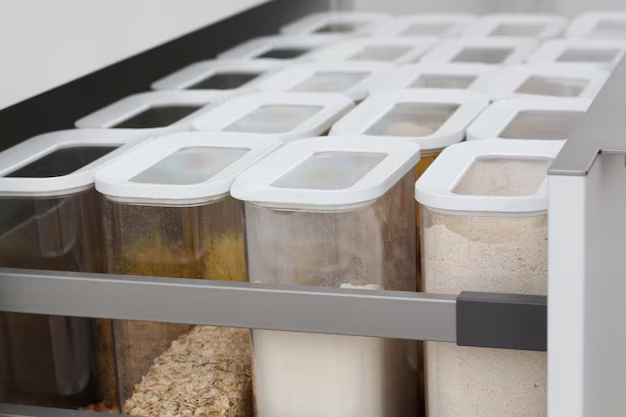Mastering Food Storage: How to Store Food in Your Refrigerator Effectively
Keeping food fresh while minimizing waste is an essential kitchen skill, often revolving around how efficiently and correctly you store ingredients and leftovers. With a few key strategies, storing food in the refrigerator can be both a science and an art, ensuring your meals stay delicious and safe to consume. Whether you're dealing with fresh produce, dairy, or cooked meals, each food type has its own specific requirements to maximize its shelf life. Let's explore some of the best methods to achieve that.
Understanding the Layout of Your Refrigerator
Before diving into specific storage tips, it's crucial to understand how your refrigerator is designed to work. It isn’t just a cold box; each section serves a distinct purpose:
The Top Shelves
The upper shelves of your refrigerator are generally consistent in temperature and ideal for ready-to-eat foods, leftovers, and drinks.
The Middle and Lower Shelves
Lower shelves tend to be the coldest spots, making them ideal for storing raw ingredients like meat, dairy, and eggs.
Drawers
Crisper drawers are designed to keep humidity in check, perfect for fruits and vegetables.
The Door
The refrigerator door is the warmest area and best suited for condiments, juices, and other items that aren’t prone to spoiling quickly.
🍎 Fresh Produce Storage
Fruits and Vegetables
Fruits and vegetables have different humidity needs. Most refrigerators come with two crisper drawers:
- High humidity settings are perfect for leafy greens and vegetables.
- Low humidity settings are great for fruits and vegetables that emit ethylene gas, like apples and pears.
Key Tips
- Keep them separated: Ethylene-sensitive produce can spoil faster when stored with high ethylene producers.
- Wash before storing: Only wash produce right before eating to prevent spoilage from excess moisture.
🥩 Storing Meat and Poultry
Raw Meat, Poultry, and Fish
These should be stored in their original packaging if they’ll be used soon. For longer storage, consider airtight containers or freezer wrapping.
Key Tips
- Avoid cross-contamination: Keep meats on the lower shelf where leaks won't risk contaminating other foods.
- Use within safe time frames: Raw poultry, for example, should ideally be used within two days if stored in the refrigerator.
🧀 Dairy and Eggs
Storing Dairy
Dairy products like milk and cheese should be kept off the door shelves, where temperatures fluctuate.
Key Tips
- Milk's perfect position: Store milk at the back of the lower shelf.
- Cheese lovers' tip: Wrap cheese in wax paper or parchment for best results.
Eggs
Keep eggs in their original carton and place them on the main shelves rather than the door.
🥘 Leftovers and Prepared Foods
Storage Practices
Store leftovers in clear, airtight containers and label them with dates to keep track of freshness.
Key Tips
- First in, first out: Practice FIFO to prevent old food from lingering.
- Quick cooling: Let hot leftovers cool before refrigerating, but don't leave them at room temperature for more than two hours.
🥫 Shelf Life Extension: Tricks of the Trade
Efficiency in your refrigerator means more than just knowing where to put everything; it’s about using some smart tricks to lengthen shelf life.
General Tips
- Don't overcrowd: Air needs to circulate to keep a steady temperature.
- Temperature check: Aim to maintain your refrigerator at or below 40°F (4°C).
- Seal and store: Use airtight containers or resealable plastic bags to store open packages and prevent moisture loss.
🤔 Common Refrigerator Myths Debunked
Myth 1: All Foods Need to be Refrigerated
Not all foods benefit from refrigerator storage - in fact, some items like onions, potatoes, and certain fruits ripen better outside of the cold.
Myth 2: Eggs Must Be Stored in the Door
Though many refrigerators come with egg trays in the door, storing them there subjects them to temperature fluctuations.
📝 Summary: Quick Tips for Better Food Storage
Here's a handy summary of the best practices for storing food in your refrigerator:
- Top Shelf: Ideal for drinks and ready-to-eat foods.
- Middle/Lower Shelf: Best for meats and dairy, maintaining cold stability.
- Drawers: Use for produce with humidity adjustment as needed.
- Door: Keep condiments here due to higher temperatures.
Visual Storage Plan
| Area | Foods to Store |
|---|---|
| Top Shelves | Leftovers, snacks, and ready-to-eat foods |
| Middle Shelves | Eggs, dairy products |
| Lower Shelves | Raw meat, poultry, and fish |
| Drawers | Vegetables and fruits |
| Door | Condiments, juices |
Closing Thoughts on Refrigerator Wisdom
Storing food in your refrigerator isn't just about keeping things cold. It's about understanding what each type of food requires to remain fresh and safe to consume. Armed with these insights, you're better prepared to extend the shelf life of your groceries and reduce waste, enjoying both delicious meals and a well-organized kitchen. Remember to always keep an eye on your refrigerator's temperature and regularly clean out expired or spoiled goods to maintain an efficient storage system. With these tips in mind, your fridge will be a well-oiled machine guarding the freshness of your food.
